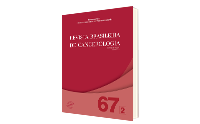Oral Antineoplastics: Treatment Adherence and Medication Beliefs
DOI:
https://doi.org/10.32635/2176-9745.RBC.2021v67n2.1189Keywords:
Medication Adherence, Pharmaceutical Services, Administration, Oral, Antineoplastic Agents, CultureAbstract
Introduction: Adherence to oral antineoplastics (OA) is an important indicator of therapeutic response related to personal, social, and structural factors. Objective: To determine rates of adherence to OA, investigating possible risk factors for nonadherence and to assess patient beliefs about medication, identifying opportunities for pharmaceutical intervention. Method: An analytical study was conducted with cancer patients using OA in 2015. Adherence to Refills and Medication Scale (ARMS) and Beliefs about Medicines Questionnaire (BMQ) were applied to assess adherence and beliefs about medication and treatment. Mann-Whitney, Chi-square, and Fisher’s Exact tests were used for data analysis. Results: A total of 222 patients were interviewed, with a 92.8% adherence rate according to ARMS and 84.7% according to BMQ, in which the necessity-beliefs exceeded the concerns with the treatment and use of OA. Family income, treatment interruption, number and causes of interruptions, depression, and medication possession ratio were the risk factors identified. Comparison of BMQ domains showed that, in the adherent group, patient beliefs in the necessity of the medication exceeded their concerns about it. Conclusion: Understanding the patient’s beliefs is a decisive factor in comprehending the risks related to nonadherence as well as in defining strategies to deal with it.
Downloads
Downloads
Published
How to Cite
Issue
Section
License
Os direitos morais e intelectuais dos artigos pertencem aos respectivos autores, que concedem à RBC o direito de publicação.

This work is licensed under a Creative Commons Attribution 4.0 International License.









